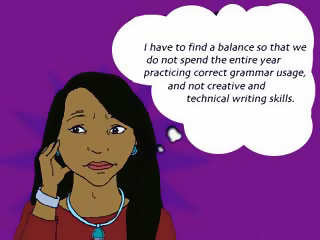What should Ms. Begay know about creating effective lesson plans?
Page 13: Year-long Planning
What Is It?
 Year-long planning is the overall curriculum framework (scope and sequence) for a specific academic year or period. It serves as an outline of what topics and objectives will be taught and when they will be taught.
Year-long planning is the overall curriculum framework (scope and sequence) for a specific academic year or period. It serves as an outline of what topics and objectives will be taught and when they will be taught.
Why Is a Year-Long Plan Important?
Year-long planning provides for continual, sequential, integrated, and cumulative learning. It helps teachers to pace their presentations of the required curriculum and to ensure that all curriculum objectives are covered.
Completing Year-Long Plans
Keep in mind the sample steps below when developing a year-long plan.
| Step 1: | Identify the required general curriculum goals and objectives for your particular grade or subject. |
| Step 2: | Identify specific benchmarks and performance standards. |
| Step 3: | Identify how student progress will be measured. |
| Step 4: | Consider the timing of local, state, and national assessments. |
| Step 5: | Consider the timing of related topics covered in other classes. |
| Step 6: | Determine themes for instruction and the applicable objectives that need to be covered within each topic. This is done by applying the curriculum guidelines. |
| Step 7: | Keeping in mind the material to be covered, decide on what sequence of instruction will best meet the needs of the students. |
| Step 8: | Outline topics to be covered within specific time periods (semesters, weeks, etc.). Identify what part of the required curriculum is being covered with individual topics in order to ensure all of the required curriculum will be taught. |
View an example of a seventh-grade mathematics year-long plan.